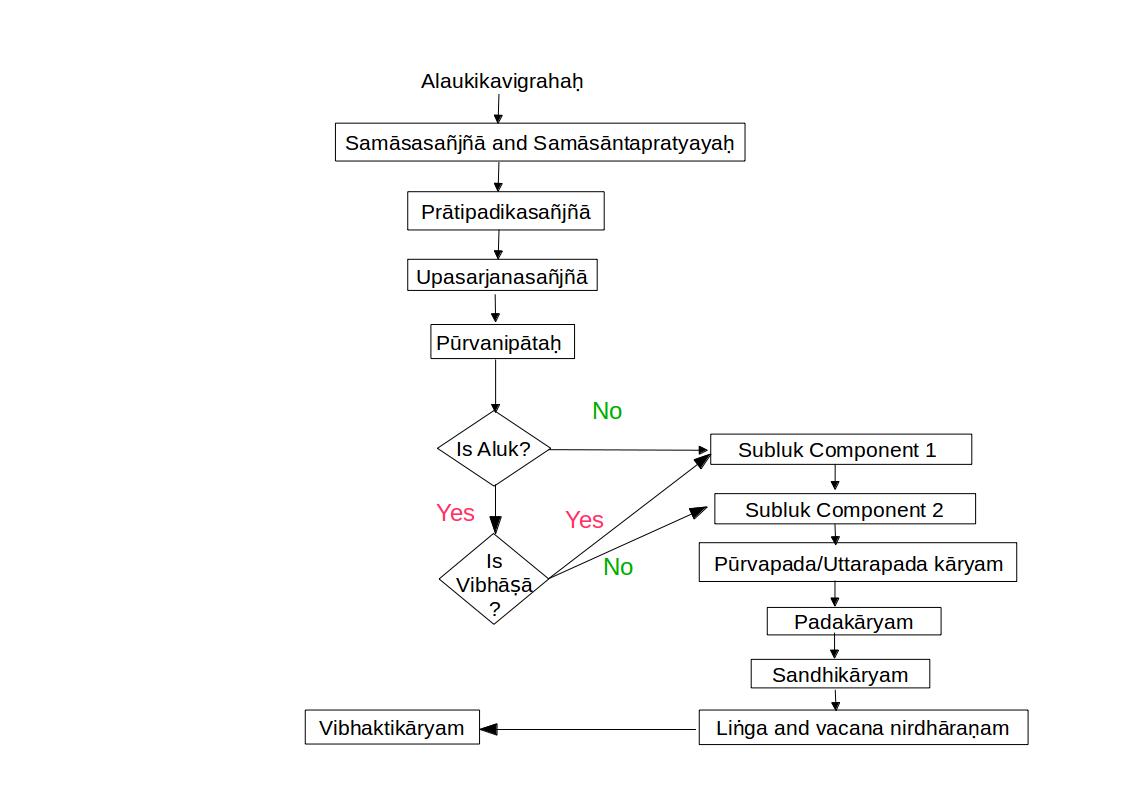This tool generates Sanskrit compounds semi-automatically from a given analytical paraphrase. The generation process of the compounds, which is inferred from the traditional commentators viz. Patañjali and Nāgeśa, starts with the alaukikavigraha, then samāsānta element is added to it. The whole string now gets the designation samāsa and such a samāsa gets the designation prātipadika. This is followed by the aluk related operations(in case of aluk compounds). Then assignment of the label upasarjana and consequent placement as prior or subsequent constituent take place. There follow operations on prior constituents pūrvapadakārya, subsequent constituents uttarapadakārya, word operations padakārya, and phonological operations that apply at junctures sandhikārya; finally, the gender, number and accent of the newly formed lexeme are decided and an appropriate case ending is added to get the compound. Below this process of compound generation is shown as a flow chart.

Limitations of Compound Generator:
1. The input for the generator should be an analytical paraphrase.
2. It handles only binary compounds. Thus the generation of dvandva with more than two components and bahupada bahuvrīhi are not possible.
3. It does not deal with the accents.
4. It produces the final output in the form of prātipadika and not a finished subanta.